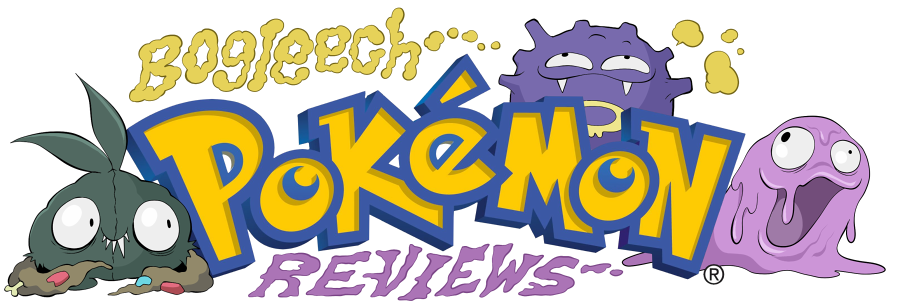|
It's been some time since my last Pokemon review, and we're doing something a little different this time around. While some pokemon are more or less just strange, nondescript monsters, they always have a clear taxonomic position on some level, right? They're reptilian, mammalian, insectoid or botanical. Even the most vague at least have a clear theme, like Exploud basically being a "loud noise monster," and bug type pokemon, almost without exception, are always modeled after a very specific and very obvious real arthropod, or in one case, a mollusk. Yes, almost without exception. 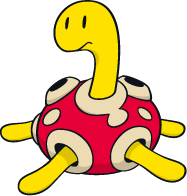 What the Fuckle is a Shuckle? 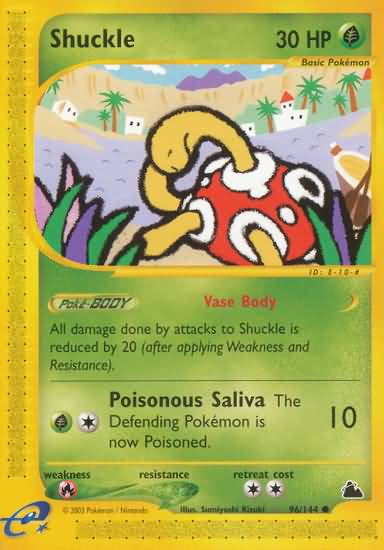
At first glance, the little bastard looks rather adorably like a small child's misunderstanding of how a turtle works, though this is clearly no reptile. Despite being a bug type, Shuckle is referred to by the pokedex as a "mold" pokemon, though this is kind of a corruption of what may just be "fermentation" in the Japanese version. Its claim to fame is supposedly its tendency to store berries in its hollow shell until they ferment into a juice which, in the anime, kind of works like a pokemon love potion, and the pokedex alludes a few times to how its slimy feet can corrode holes in rock. All very fascinating, but what does it all mean? Will we ever know? Exhibit A: Scale Insects 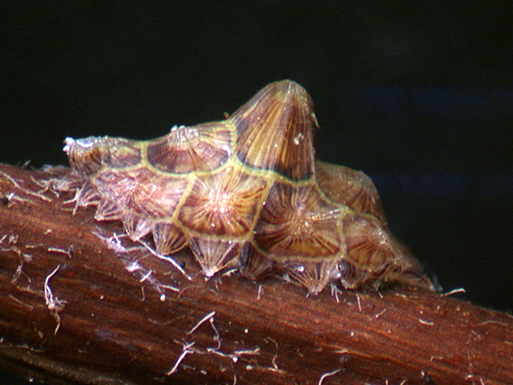
We're going to start off with my original interpretation of Shuckle from way, way back in 2002, when I first wrote my popular "Pokemon Biology" article. Ranging from paper-thin disks to elaborate armored shells, the scale insects are "true bugs," that is, members of the order Hemiptera, closely related to the aphids, whiteflies and other so-called "plant lice." Highly adapted for a life of sucking plant juices, many scale insects are barely capable of movement, and the females are often entirely sessile, anchoring to the same spot for their entire adult lives. Underneath their wax-like, secreted shell, their appendages are sometimes so vestigial that the true body looks like little more than a soft, flattened blob. What makes the scale insects a good match for Shuckle isn't just that they're squishy, shell-dwelling bugs, but their constant production of honeydew, a sugary ooze many other organisms find irresistible, not all that different from Shuckle's "juice" production. 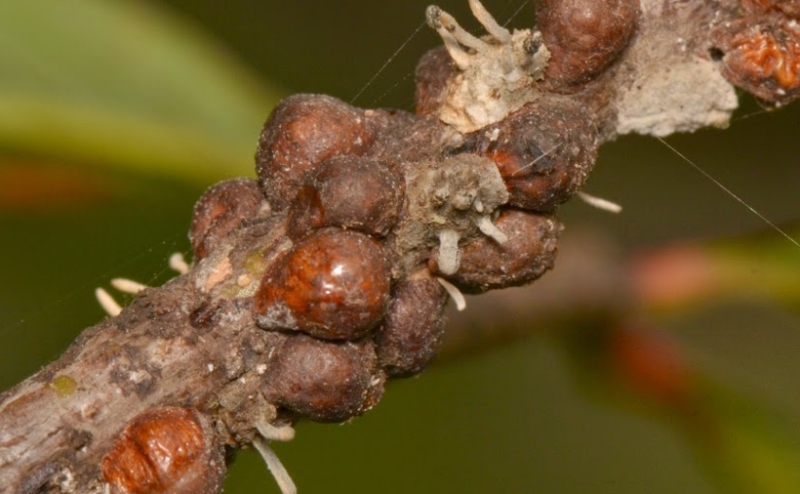
Like virtually all insects, the scales also suffer attack by pathogenic fungi, and we'll be talking more about fungi shortly, but doesn't the infectious growth on these dead scales strike you as familiar? Exhibit B: Barnacles 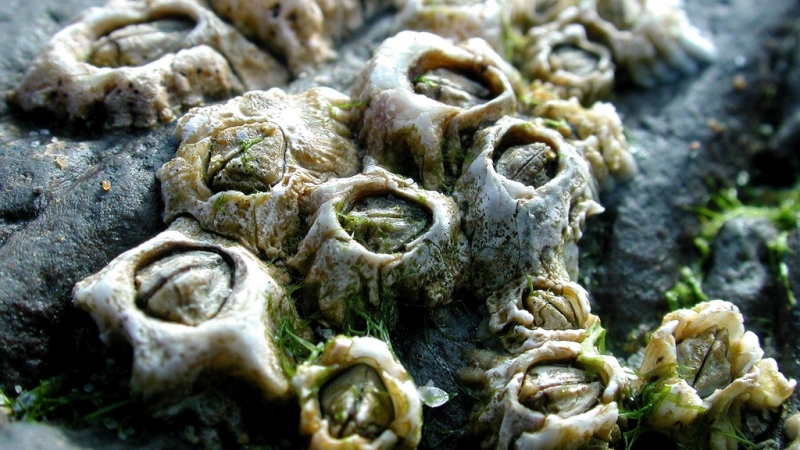
I've had much to say about barnacles in the past. These weird arthropods have a soft interior and long, serpentine legs hidden in a compact, notoriously tough, cement-like shell, the scourge of anybody who has ever had to do maintenance on nautical equipment, so that's already several things in common with good old Shuckle. In Japanese, a barnacle is even referred to as Fujitsubo, while Shuckle is Tsubotsubo, though the "tsubo" part simply means jar. Yes, Shuckle's Japanese name is literally Jar-jar. The barnacle theory would be pretty strong, if not for Shuckle's diet and habitat. Barnacles live in the ocean, attached to rocks, flotsam or even other animals, and they feed on plankton gathered by their feathery limbs. It should be said, however, that Shuckle could conceivably represent a fictional "land barnacle," no stranger than Pokemon's sand-dwelling hippos or flying plants, though Shuckle could be caught at least once from seawater when imported to Pal Park. Multiple people have also pointed out, since the first upload of this page, that Shuckle is traditionally found by smashing rocks near the seashore. More recent generations have brought us the more explicit cirripedes, Binacle and Barbaracle, but Pokemon has recycled plenty of animals by now, often in wildly different styles...and they, too, are found inhabiting seaside rocks. Exhibit C: Fungus 
Could Shuckle not even be an animal at all? Other fungus-based pokemon are usually grass types, but we've seen both bug-type and non-bug-type mollusks and crustaceans, so taxonomy isn't always consistent among pocket monsters. Shuckle's soft, yellow appendages certainly look a little like fungal hyphae, and it's fungi such as yeasts which drive fermentation, Shuckle's most celebrated talent. There are even fungi capable of wearing down rock. We've basically checked off every feature of Shuckle except one: the shell. Could it really just be a rock the fungus carved into a home? Or is it more like an armored spore? Fungus feels like a close fit, but still not quite perfect. Exhibit D: Shelled Protozoa 
There do exist, in nature, a number of organisms which extrude soft, finger-like pseudopods through pores in their tough, hollow shells. Exhibiting a staggering variety of shapes, these tiny life forms are actually single-celled amoebae, usually belonging to either the Foraminifera or the related Radiolaria, and their shells may be composed of calcium carbonate, silica or glued-together bits of detritus. The vast majority live in the ocean, in such staggering numbers that their discarded shells can comprise the bulk of marine sediments or even the sand of some beaches. The nautical association once again poses some trouble for our theory, but unlike the barnacles, there are Foraminiferans found on land, in moist soil environments. The only problem now would be their relative obscurity, and why on Earth a giant Foraminiferan would make wine out of fruit. Exhibit E: Slime Molds 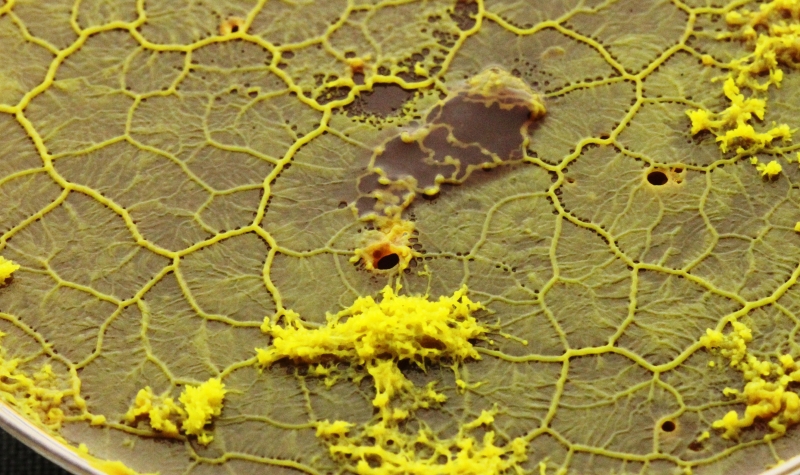
The so-called "slime molds" aren't even fungi at all, but another group of organisms we categorize under the broad umbrella term that is "amoebae," designating any single-celled organism that doesn't hold a particular shape. The various slime molds actually aren't even all related to one another; there just happen to be several groups of organisms that go through both a fungus-like fruiting stage and mobile amoeboid stage. Some are technically one giant, fluid cell with many nuclei, while others are comprised of several thousand microbes organized into a sort of colony. Slime molds feed on fungi, bacteria and decomposing vegetable matter, especially associated with decaying wood. As part of their life cycle, many slime molds eventually form into hardened, mushroom-like or sac-like growths, which contain the spores. While it's not a biologically meaningful term, both slime molds and foraminifera are considered types of "amoeba." Could Shuckle even be a combination of the two concepts? Exhibit F: Apple Rust 
I can't believe I almost forgot to consider one of my personal favorite fungi, but you can thank acromantulasghost for pointing out what should have been obvious to someone who thinks about fungi as often as I do for no particular reasons. Apple rusts are a group of fungi parasitic on a variety of trees, some of which produce a large, potato-like gall and exude slimy, bright yellow "tentacles" laden with spores. It's the very spitting image of Shuckle. 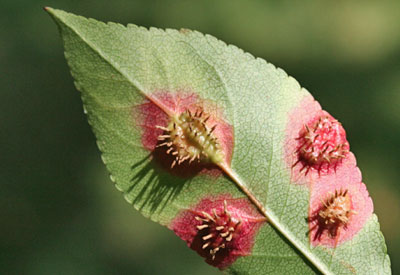
The only big snags here? The Japanese version of apple rust isn't quite as dramatically Shuckular, though the coloration is more striking. Plus, bug/rock is still a pretty farfetch'd type combination for a fungus. I certainly want Shuckle to be an apple rust fungus, but then...I also really want it to be a slime mold. Or a barnacle. Or a radiolarian. Shoot. Exhibit G: Shuckle So a lot of real-world organisms bear some striking similarities to the little guy, but there's still always the possibility that Shuckle isn't really based on anything...that Shuckle is just Shuckle. It isn't quite like a Pokemon to eschew any outside point of reference, but Shuckle did turn up in the early years of the series, when the development process may have still been finding itself. Whatever the case, Shuckle is a simple design with a lot of charm, a weird little vase-like invertebrate with a sad, pathetic little face who just wants to be left alone with its stinking, rotting collection of fruit. Is it an arthropod? Is it a giant protozoa? I just don't know. Nobody knows but the guy who came up with the idea, and Pokemon's creators are in the frustrating habit of virtually never revealing their creative secrets, so until I can fly to Japan and bang on Ken Sugimori's door at four in the morning screaming about slime molds and scale insects, we may just have to accept Shuckle for the one thing we know it is: HORRIBLE. |
